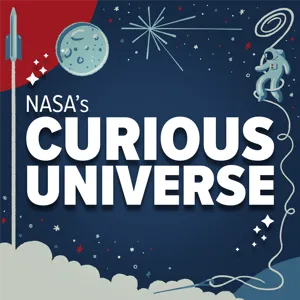Podcast Summary
Moon Rocks and Soil at the Smithsonian: The Smithsonian's moon exhibit features genuine moon rocks and soil, bringing scientific insights into the moon's formation, while Bakers offers savings and rewards through their app and memberships.
While the Smithsonian National Air and Space Museum in Washington DC showcases various historically and culturally significant objects, the moon exploration exhibit holds a unique allure. The exhibit features genuine moon rocks and soil, brought back by astronauts during the Apollo missions. These samples have played a crucial role in scientific research, helping answer questions about the moon's formation. Now, NASA's Perseverance rover is collecting similar samples from Mars, with plans to bring them back to Earth in 2033. In shopping news, Bakers offers not only low prices but also rewards and savings through their app, fuel points, and Boost membership. These offers enable customers to save significantly on their purchases and fuel.
Mars Sample Return Mission: Unraveling Mars' Secrets and Exploring Life Beyond Earth: The Mars Sample Return Mission, led by NASA astrobiologist Lindsay Hayes, combines geology, chemistry, and astronomy to expand our knowledge of Mars and the potential for life beyond Earth.
The Mars sample return mission, led by NASA astrobiologist Lindsay Hayes, holds the potential to answer significant questions about the history of Mars, Earth, and the possibility of life elsewhere in the universe. This mission is crucial for understanding the mineralogy of Mars and assessing potential hazards for future human exploration. Astrobiology, the interdisciplinary field studying the origin, evolution, and distribution of life throughout the universe, does not have a single defined path for becoming an expert. Instead, it encompasses various scientific disciplines, such as geology, chemistry, and astronomy, all working together to expand our knowledge of life beyond Earth.
Mars: A Clue to Our Solar System's History and the Emergence of Life: Mars, our neighbor planet, holds valuable clues to understanding our solar system's history and the emergence of life. The Perseverance Rover is currently collecting samples from Mars for further analysis on Earth, providing insights into Mars' past and present conditions.
Mars, our neighbor planet, holds important clues to understanding the history of our solar system and the emergence of life. Mars and Earth share some similarities, as Mars was once believed to have a surface environment similar to Earth's, and it is the closest planet to Earth. However, Mars' surface is now cold and dry, and it lacks a robust ecosystem. The Perseverance Rover, currently operating on Mars, is collecting samples from the planet's surface to bring back to Earth for further analysis. These samples, which number around 30, will provide valuable context and insights into Mars' history and the factors that led to its current state. The samples will be transported back to Earth using the Sample Retrieval Lander, which will pick up the samples from the Perseverance Rover and bring them back to Earth for study. Understanding Mars' past and present conditions is crucial for expanding our knowledge of the universe and the potential for extraterrestrial life.
NASA's Plan to Bring Back Mars Samples: NASA's Perseverance Rover will collect Mars samples, launch them into orbit, and Earth Return Orbiter will bring them back to Earth. Facility in Utah will analyze them in a BSL4 setting, ensuring safety and avoiding contamination.
NASA is currently planning to bring back samples from Mars for the first time, which involves several complex steps. The Mars 2020 Rover, named Perseverance, will collect samples in Mars' Jezero Crater, launch them into orbit, and the Earth Return Orbiter will capture and return them to Earth. The samples will then be transported to a new, biosafety level four (BSL4) facility in Utah for analysis. The facility design is still under consideration, with options including modifying an existing one or creating a temporary one. Safety is a top priority, as the facility must ensure nothing escapes from the samples and also avoid contaminating them with Earth organisms. The samples are expected to be returned by 2033. The process involves extensive planning and collaboration between various missions and teams, and the facility design is a significant consideration.
Bringing Mars samples to Earth for analysis: NASA prioritizes Mars sample return for advanced lab analysis, but selecting instruments and ensuring safety is complex due to rover limitations and potential hazards.
Bringing samples from Mars to Earth for analysis is a complex process that requires careful handling and safety assessments. NASA prioritizes sample return because the instruments on Mars rovers cannot match the capabilities of those in Earth-based labs. However, selecting the right instruments beforehand is challenging, and rovers face power, size, and weight limitations. Once samples reach Earth, scientists will study them to learn more about Mars and potentially discover signs of life. Safety assessments are crucial to ensure humans aren't exposed to any potential hazards. The process involves various tests and sterilization methods to ensure samples are safe for handling or completely sterilized before release. While some samples may be released early using simpler sterilization methods, others will undergo rigorous safety assessments before being made available for research.
Exploring Mars: A Global Effort: Mars samples collected by Perseverance rover will be studied globally through an open competition process, potentially revealing valuable information about Martian history through age dating and biosignature preservation.
The Mars samples collected by the Perseverance rover are not just for one group or organization to study, but rather for the global community. These samples will be subjected to various scientific investigations through an open competition process, allowing researchers worldwide to propose measurements they wish to make. Two significant hypotheses for these studies include age dating using crater analysis and biosignature preservation in the delta deposits. Age dating could help determine the exact age of Martian craters, providing valuable information about the surface's history. Meanwhile, biosignature preservation in the delta deposits, which form when a river enters a larger body of water and deposit sediments, could potentially lead to the discovery of fossils or other signs of past life on Mars. These samples' potential impact on our understanding of Mars and its history is vast, making them a valuable resource for the global scientific community.
Searching for biosignatures on Mars: Discovering potential biosignatures on Mars could expand our knowledge of the universe, suggest new habitable planets, and provide insights into Mars' surface and climate history.
The discovery of potential biosignatures on Mars could have significant implications for our understanding of the solar system and the origins of life on Earth. The Jezero Delta, an area once believed to have been a habitable environment on Mars, is a prime location for this search. If biosignatures are found, they could be evidence of ancient life that is related to Earth's life or an entirely new origin of life. This discovery could expand our knowledge of the capacity and adaptability of life, and potentially suggest that there may be more habitable planets within our solar system and beyond with the potential for life. The findings from studies of Martian samples could also provide insights into the evolution of Mars' surface and its climate history. Overall, the search for biosignatures on Mars has the potential to broaden our understanding of the universe and our place in it.
Exploring Mars and other planets for insights into their habitability and Earth's past, present, and future: Exploring Mars and other planets through studies and potential sample returns can provide valuable insights into their habitability and Earth's history, informing future missions and human expeditions.
The exploration of Mars and other planets through studies and potential sample returns can provide valuable insights into their habitability and help us understand the Earth's past, present, and future. These findings can also inform future missions, such as human expeditions to Mars, by answering questions about the planet's dust, minerals, and potential hazards. Mars sample return is seen as the first step in broader planetary exploration, with the hope that it will lead to the return of samples from other planets and moons in our solar system. While the cost of such projects can be significant, NASA's exploration of space is seen as a worthwhile investment that pushes the boundaries of human knowledge and understanding.
NASA's Space Exploration Brings Economic Benefits and Inspiration: NASA's space exploration investments create jobs, drive technological advancements, and inspire wonder and excitement on Earth
Every dollar spent on space exploration, whether it's for building rockets or paying people for their work, has a significant impact on Earth. NASA's missions, despite appearing to be solely focused on space, bring about numerous economic benefits and inspire excitement and wonder around the world. The money is not just being launched into space, but is being invested back into communities and economies, creating jobs and driving technological advancements. Furthermore, the excitement and inspiration that comes from NASA's discoveries and missions is invaluable, providing a much-needed break from the mundane and reminding us of the wonders of the universe.





